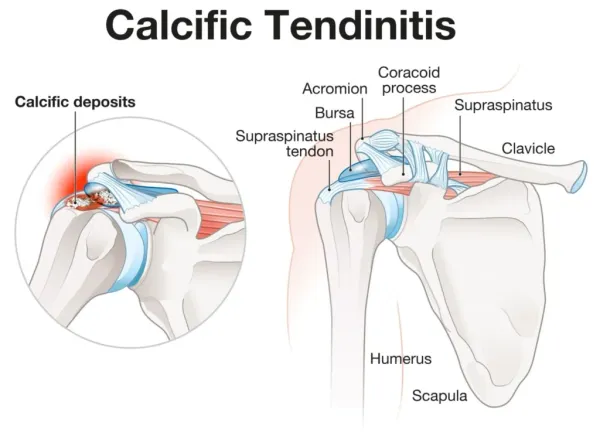Does Running Damage Knees?
How many times have you heard that patients should avoid running as it causes/worsens knee Osteoarthritis? This article is an evidence-based look at running and its association (or not) with osteoarthritis.

How many times have you heard that patients should avoid running as it causes/worsens knee Osteoarthritis? How many patients do we then educate that this isn't the case and that activity is actually good for knees? Do you still err on the side of caution though and tell your patients to avoid running due to the extra forces?
This article is for all of you! Let's see what the evidence is for running and knee 'damage' and what you should be saying to your patients and why!
Is running even good exercise?
Yes!
There are a lot of studies that have looked at running as a form of exercise and if it is effective. This is due both to the widespread popularity of running and also the small volume it takes to have a significant impact on health. Studies have found between a 30-40% reduction in mortality (death) from all causes and a 45% reduction in mortality from cardiovascular disease from running 5-10 minutes a day even at a slow speed!
When compared to walking, the benefits of running are even more significant. Even if you run for less time than you walk, you will still generate the same benefits. One study found that a 5-minute run has the same benefits as a 15-minute walk!
When we look at inactivity being on the rise and people/patients often citing time as a factor for not getting more active then running appears to make more sense than walking in terms of 'bang for your buck'
The only downside to running is that it has a higher risk of musculoskeletal injuries. However, evidence suggests that most of these injuries stem from overuse, so a sensible graded approach to exercise and adequate recovery time can help prevent them.

Does running cause osteoarthritis?
No!
In recreational runners running has not been found to have any causative effect with the development of osteoarthritis. Several studies back up the fact that exercise in general is a good evidence-based management strategy for osteoarthritis. In studies and systematic reviews that have compared runners to non-runners, there is no statistically significant difference in the rate of osteoarthritis between the groups.
Studies have even shown that runners have actually less risk of developing hip and knee osteoarthritis when compared to non-runners, however, this is caveated with the fact that statistically runners tend to be healthier in general with lower rates of other factors that influence joint health such as smoking and alcohol intake.
However, remember I keep using the term recreational runners? Well, that is because there is a link to dose here with running. Elite runners (those who have competed at world championships, European championships and the Olympic games) did shower higher levels of knee osteoarthritis compared with non-runners. As the paper that states this also states, for the vast majority of people running is likely to actually have a positive impact and should be encouraged. I added this in as it's important to see all sides.

What about running if you have osteoarthritis?
This is still an evolving area of research. However, current evidence suggests that there is no increase in the effects of osteoarthritis in recreational runners. In fact, many studies found that patients who ran with osteoarthritis reported better knee pain than those who did not run.
Patients also report better outcomes when running when osteoarthritis compared to non-runners and the conclusion from one paper is even that it might have a protective effect on the knees with another study reporting that there was a significantly lower risk of runners who had osteoarthritis progressing to a total knee replacement compared with non-runners.
It's essential to note that an increase in the volume and intensity of running has not been linked to better health outcomes overall. Runners with osteoarthritis tend to self-select lower-intensity and shorter sessions, which is still beneficial and should be encouraged.
What should I tell my patients?
We know that the vast majority of people we see are not meeting the World Health Organisation guidance of 150 minutes of moderate to vigorous physical activity per week. The evidence suggests that actually, we can achieve the same benefits of this with 5-10 minutes of running per day or 15 minutes of brisk walking per day. So given this and the freely available nature of events such as Parkrun where there is a community atmosphere to help with motivation then promoting increasing activity to patients with or without Osteoarthritis is the sensible move.

What to promote? Well, the evidence suggests anything that meets the moderate-vigorous threshold will help but honestly, it's going to be a patient choice. Give examples and show that any increase in physical activity is likely to have a benefit on general health. If they enjoy running then from this review hopefully you can be confident in showing that it does not 'wear out' knees or cause an increase in osteoarthritis.
Hopefully, you can also be confident in debunking the other commonly held myth that runners should stop running when they get osteoarthritis as this will make things worse - nope, get out there and keep doing what you enjoy!
Quick note on surface
There is no real evidence that any type of surface has any impact on osteoarthritis in runners either when they have it or prior. The evidence is very low quality though and very sparse. I think if we adopt a common sense approach here then the following would apply:
- No real impact on where/type of running you do
- Likely to be more demanding running on uneven ground e.g. trail running so if you're finding this a struggle then mixing it up is likely to be beneficial
- Balance has been shown to be better in trail runners but then again all runners were shown to have better balance scores than controls in one study
- If you think about it then there are more demands in trail running in terms of the surface but possibly more forces in road running in terms of the hardness of the surface - therefore like I can see from the evidence these factors would tend to cancel each other out (in recreational runners)
Again - just the fact you are active (regardless of the surface) will have a beneficial effect on your health and there is no significant association between running on a harder surface (roads and pavements) and an increase in osteoarthritis so enjoy what you enjoy and as long as you're not avoiding exercise don't do what you don't enjoy!





